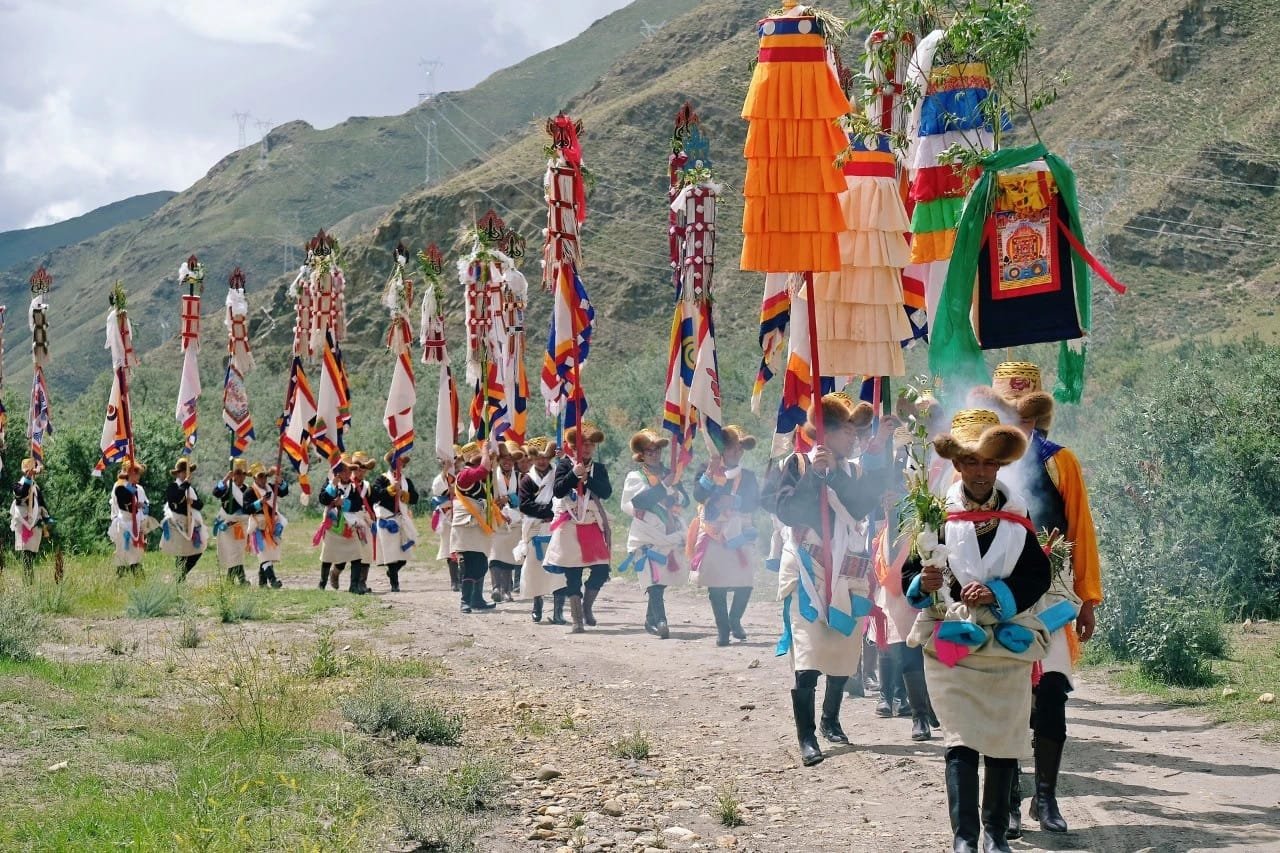Introduction to the Black-Necked Crane
The black-necked crane (Grus nigricollis) is a striking avian species endemic to the Tibetan Plateau, recognized for its distinct features and ecological significance. This crane is characterized by its elongated neck adorned with a black hue, which contrasts sharply with its elegant white body. Widespread across the high-altitude regions, it is uniquely adapted to thrive in the harsh climate of the plateau, making it a remarkable example of resilience in nature. The black-necked crane’s habitat extends across the Tibetan Autonomous Region of China and into parts of India and Bhutan, where it frequents wetlands, grasslands, and agricultural fields.
Beyond its biological attributes, the black-necked crane holds considerable cultural importance, particularly within Buddhist traditions. Within these belief systems, the bird is often seen as a symbol of harmony and peace, reflecting the delicate balance between nature and humanity. The reverence for the black-necked crane extends into various cultural practices, folklore, and artwork, where it embodies the principles of coexistence and the necessity for environmental stewardship. As a significant figure in local narratives, this crane inspires conservation efforts, emphasizing the interconnectedness of wildlife preservation and cultural heritage.
The conservation of the black-necked crane is not only vital for maintaining the biodiversity of the Tibetan Plateau but also serves as an indicator of the health of the overall ecosystem. Efforts to protect their habitats are essential, given that their environmental space is threatened by habitat degradation and climate change. As such, the black-necked crane is not merely a bird of beauty but serves as a poignant reminder of the critical role that humans play in fostering a harmonious relationship with the natural world.
Physical Characteristics and Habitat
The black-necked crane (Grus nigricollis) is a striking bird that showcases a notable array of physical characteristics, contributing to its appeal and distinctive presence in its native regions. Typically, this species measures about 90 to 100 centimeters in height, making it one of the larger crane species. Its most defining feature is its striking black neck, which contrasts beautifully with its predominantly grey plumage. The head is crowned with a bold white patch that extends from the eyes to the back of the neck, while the facial skin is a vibrant red, further enhancing its remarkable appearance. The long legs, well-adapted for wading in wet environments, allow the crane to navigate through its habitats with grace. The wingspan can reach up to 230 centimeters, facilitating a majestic flight that is particularly pronounced during courtship displays.
Predominantly found in the Tibetan Plateau and adjacent regions, the black-necked crane thrives in diverse ecosystems, which include wetlands, high-altitude lake basins, and alpine meadows. These habitats provide essential resources for breeding and wintering. During the breeding season, typically from April to July, these cranes are drawn to wetland areas with shallow water and abundant vegetation, as these conditions foster the availability of food resources and suitable nesting sites. The nests are usually constructed on small islands or elevated platforms, safeguarding the eggs from potential predators. In contrast, during winter, the black-necked cranes migrate to warmer lowlands, searching for more temperate conditions and accessible food sources. This seasonal movement highlights their adaptability and reliance on specific habitat requirements throughout their life cycle.
Behavior, Ecology, and Migration Patterns
The black-necked crane, known for its striking appearance and graceful movements, exhibits a range of interesting behaviors and ecological adaptations that play a significant role in its survival. Primarily found in the high-altitude wetlands of the Tibetan Plateau, this bird has developed specialized foraging habits suited to its environment. Their diet consists mainly of grasses, tubers, and seeds, but they also consume small invertebrates when available, demonstrating their adaptability to varying food sources throughout the seasons.
Socially, black-necked cranes are known for their monogamous breeding practices, often forming long-term pair bonds. During the breeding season, which typically occurs from April to July, these cranes engage in elaborate courtship displays. These displays include intricate dances and synchronized movements that not only strengthen pair bonds but also attract potential mates. Nesting usually takes place in marshy areas, where pairs construct their nests using reeds and other vegetation, providing a secure environment for raising their chicks.
Migratory behavior is another critical aspect of the black-necked crane’s ecology. As the seasons change, these cranes undertake an impressive migration journey. In the late summer and autumn, they travel from their breeding grounds in Tibet to wintering areas in southern China and India, covering distances of up to several hundred kilometers. This migration is essential for their survival, allowing them to access warmer climates and abundant food sources during the harsh winter months. The cranes typically return to their breeding grounds in early spring, timing their arrival with the availability of suitable nesting habitats, which underscores their incredible ecological adaptability.
Understanding the behavior, ecology, and migration patterns of the black-necked crane is crucial for conservation efforts. Protecting their habitats and migratory routes is vital to ensuring the sustainability of this iconic species, which serves as a symbol of harmony in its native region.
Conservation Status and Efforts
The black-necked crane, a symbol of ecological harmony, is currently facing challenges that threaten its population and habitat. As of recent estimates, the global population of black-necked cranes is between 10,000 to 15,000 individuals, primarily concentrated in Tibet and the surrounding regions. These elegant birds are notable for their striking appearance and significant cultural relevance, yet their survival is jeopardized by various factors, including habitat loss and predation. Agricultural expansion, urbanization, and climate changes have led to the degradation of wetlands and grasslands, which are crucial for the nesting and breeding of these cranes.
Predation by feral dogs and other mammals further exacerbates these challenges, influencing the stability of black-necked crane populations. Consequently, conservation organizations and local communities have initiated various protective measures to mitigate these threats. Legal protections for the crane were established in multiple countries, ensuring that habitats are safeguarded and that the species is listed under various conservation laws. In addition, organizations such as the World Wildlife Fund (WWF) play a pivotal role in conservation efforts, promoting habitat restoration and sustainable agricultural practices that are compatible with the needs of black-necked cranes.
Community engagement is vital for the conservation of the black-necked crane. Local populations are encouraged to participate in monitoring activities, thereby fostering a sense of stewardship for these remarkable birds. International collaborations also enhance conservation initiatives, allowing for the sharing of resources and knowledge across borders. The preservation of the black-necked crane and its habitat is not solely the responsibility of individual nations but requires a concerted global effort. Protecting this culturally significant species will ensure that future generations can continue to admire its beauty while contributing to the intricate tapestry of biodiversity.




